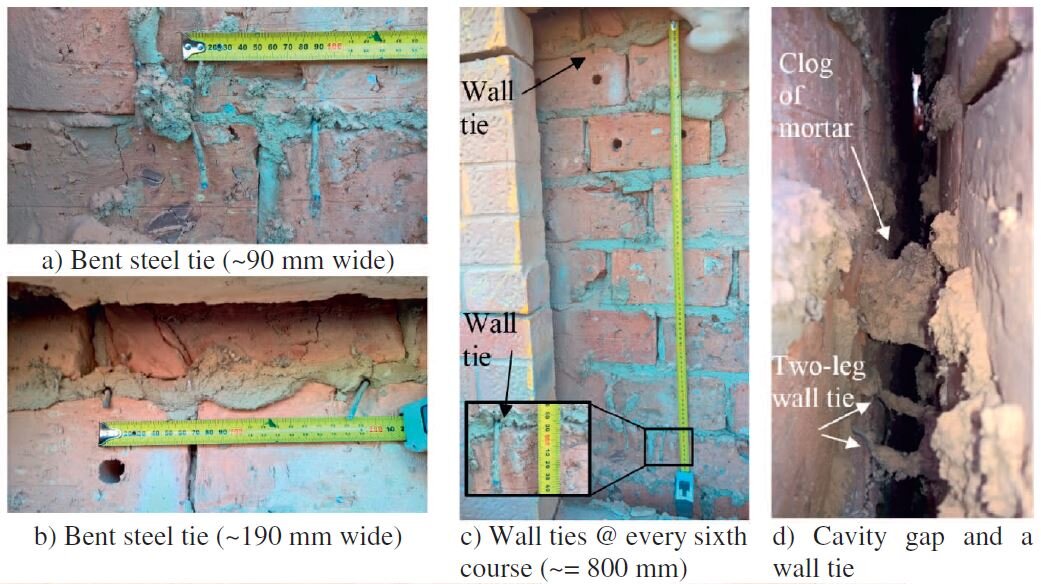Out-of-plane Strength of Existing Two-way Spanning Solid and Cavity
Unreinforced Masonry Walls
Structures, 13
Scope and methodology
In-situ air-bag testing were undertaken to study the effects of the boundary conditions on the wall out-of-plane capacity.
4 double-leaf cavity walls and 4 single-leaf solid walls were tested in two 1960s dwellings in Adelaide, South Australia.
In-situ boundary conditions: flexible ceilings, plaster finishing, and original wall ties.
A comparison between strength predictions using an energy-based, virtual work method and an equilibrium-based method was also undertaken.
FINDINGS
The improved virtual work method predicted the wall strength more consistently than the fracture line method, as reflected in smaller COVs.
Both methods were found to be, on average, conservative.
In case 2 (where the boundary conditions are assessed with less conservatism) individual wall results suggest an increased likelihood of the wall strength overestimation.
Ignoring plaster in cthe alculations results in significant underestimation of the wall strength.
Based on the findings, the improved virtual work method is recommended for wall assessments, with the requirement to conservatively idealize the wall edges with partial restraint as being free to displace in the out-of-plane direction. The vertical edge rotational fixity factors that are required as part of the virtual work method were assumed as 0.5.





